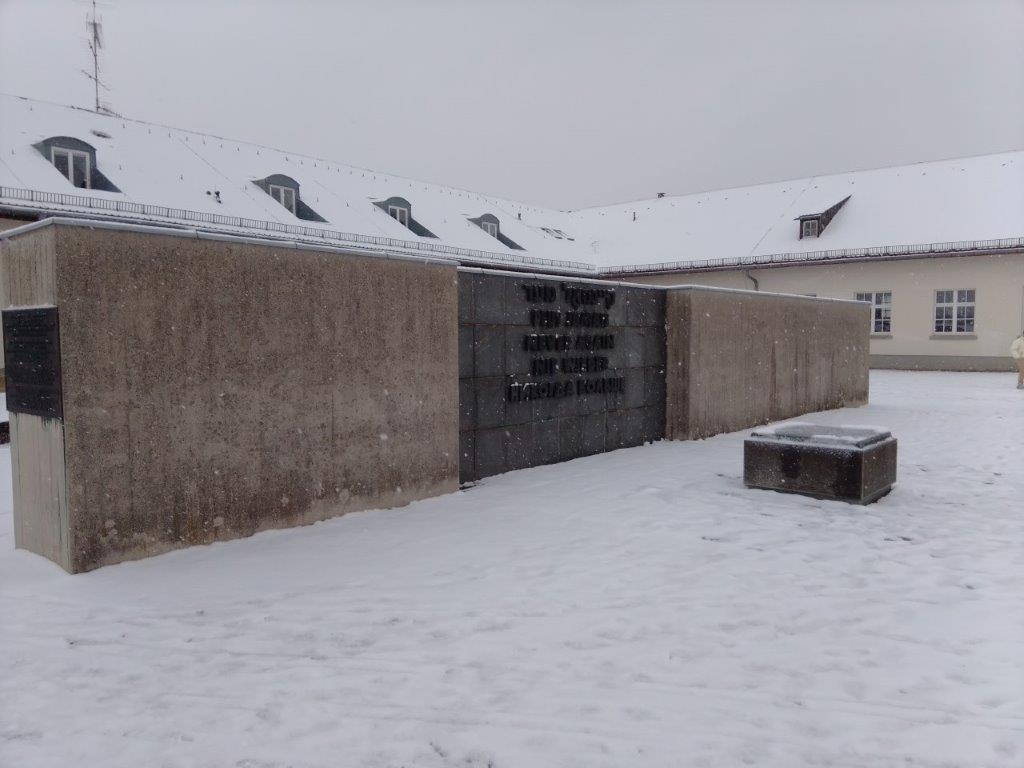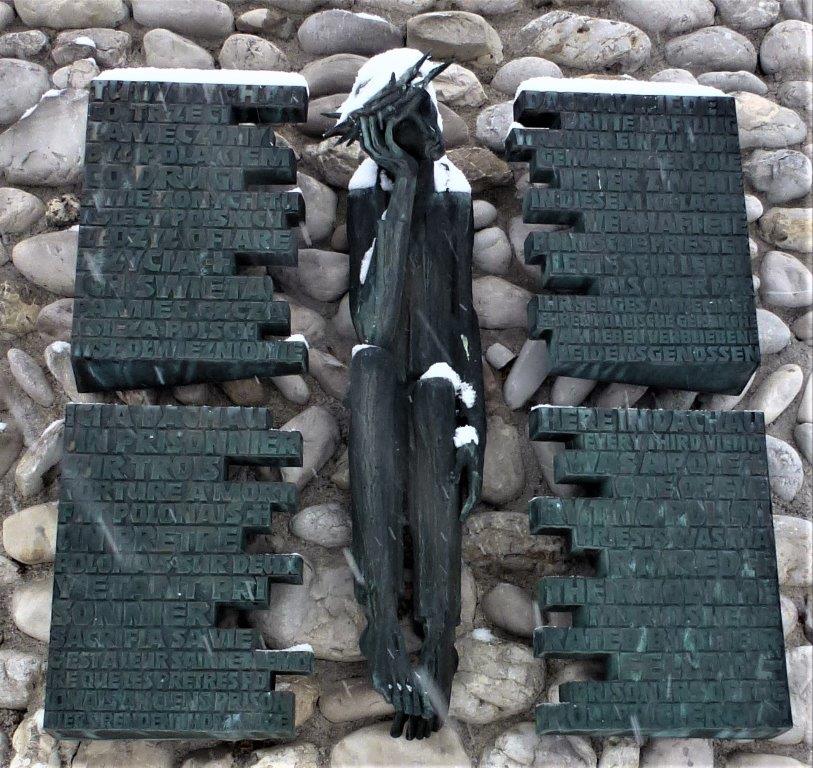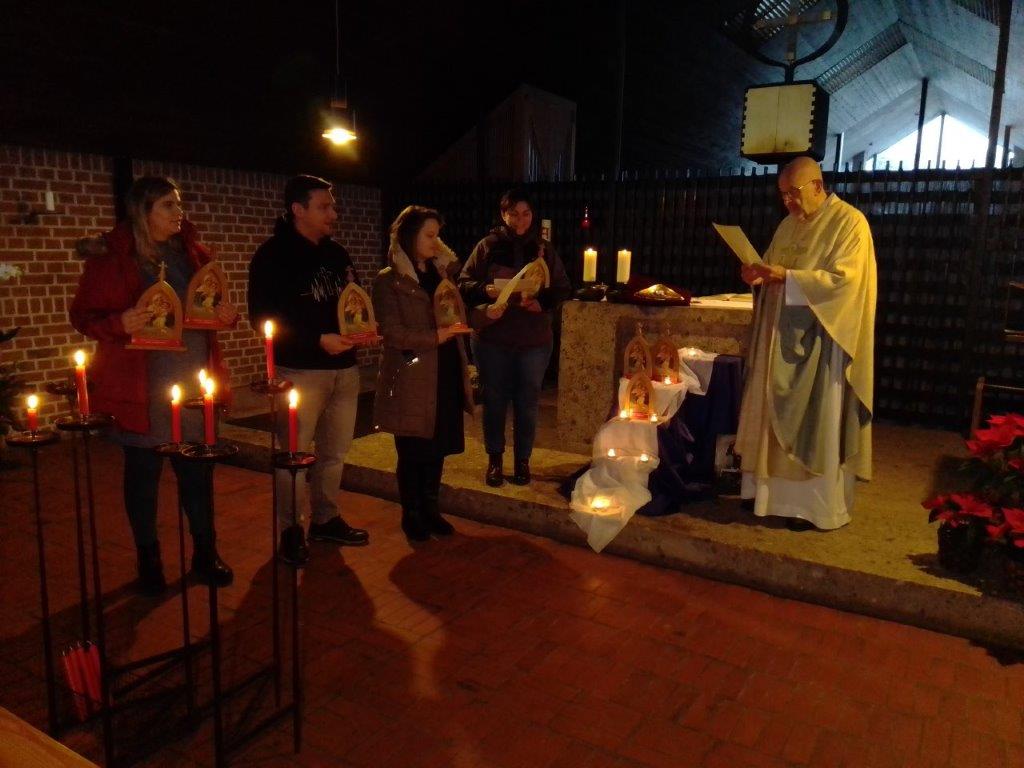Representing the international Schoenstatt Movement, some 30 people from the Federation, the League and the Pilgrims’ Movement went to the concentration camp memorial in Dachau to remember January 20, 1942, and to reiterate that even today ” we are still going forward” in solidarity with our founder. The small group was not deterred by the surprising reappearance of the winter weather. The participants came from neighboring dioceses, especially Augsburg, Regensburg, Eichstätt, Bamberg and the Archdiocese of Munich-Freising.
1943: typhus outbreak
During the Stations of the Cross, special moments for our founder during these weeks 80 years ago, in the winter of 1943, were recalled. At that time there was the first outbreak of typhus in the camp, and many fell victim to it, among them the Schoenstatt chaplain Alois Andritzki. Because of the outbreak of this disease, quarantine was imposed in the camp. Therefore, the priests could not work on the plantation for a few weeks.
Father Kentenich took advantage of this time by giving lectures to the priests. Many were grateful for this valuable spiritual nourishment, including evangelical pastors. Through packages, Schoenstatt literature could be secretly introduced into the camp. We know that the book “The Sanctity of Daily Life” was eagerly read by many, such as Father Engelmar Unzeitig from Marianhill.
Remembering the decision of January 20, 1942
Above all, we wanted to remember January 20, 1942, the day of Father Kentenich’s momentous decision in the Gestapo prison in Koblenz.
This date, January 20 – but 1941 – is written under a photo on the information board near the visitor center. It shows Himmler’s car at the entrance to the main SS guard post. He may have come here to be present at the inauguration of the camp chapel in Block 26 for propaganda purposes. The simple chapel existed since that day, but Mass could not yet be celebrated because the necessary supplies were lacking.

In Dachau’s hell, the Home Song emerges
At the Jourhaus and near the main gate “Work sets you free”, Anton Pfaffenzeller quoted our founder’s speech at Memhölz. At that moment, Father Kentenich recalled the freedom verse from the Home Song. On February 2, 1943, Kentenich put words to his ideal of the Schoenstatt Family in the Home Song: “Do you know that land…?” Was he inspired by the cynical inscription on the roof of the farm building to point out exactly the opposite as an ideal?.
We want to learn how to educate ourselves under Mary’s protection
We crossed the Lase de Lista Square, where the memorial was erected in 1968. Sister M. Elinor Grimm said that the words “Never again” often gave students something to think about. For her, it is becoming increasingly clear that people cannot do it alone, that we need help from above. So we went to the Hall of Remembrance to silently entrust all our intentions to our Queen, the Educator of the Peoples. We greatly need the advice of our great educator, who said to the boys as their spiritual director, “We want to learn to educate ourselves under the protection of Mary…”, as early as 1912 in the Pre-founding Document. Sister Elinor draws attention to a new commemorative plaque that the “Selige des KZ Dachau” Association has put up.

Do you know that abundant and pure land, reflection of the eternal Beauty?
Because of the snow, the whole countryside was enveloped in a stunning snowy landscape, untouched, peaceful, very different from the horror of 80, 90 years ago. But perhaps this can also be an inspiration for us. Like our founder, may we not be paralyzed by external circumstances, but continue to try to work positively, trusting in the reality of the supernatural and in the unity as a spiritual community.
May we stay committed and not lose our ideals. “Do you know the land so rich and pure, the reflection of Eternal Beauty?” – This snowy landscape can well remind us of that verse of purity! We stopped briefly at the infirmary, where the prisoner Dr. Pesendorfer was so devoted in caring for his fellow prisoners, including Father Eise.
An encounter with the communist Hugo Gutmann, block leader
In what had been Block 13, Father Kentenich’s dialogue with the head of the prisoners there, the Communist Hugo Gutmann, and his reaction to the priest’s reply was recalled. “You preachers talk about God! I have never come across him in this place. Maybe you have met him?” challenged Gutmann, looking Kentenich straight in the face, hoping to intimidate him. But the priest answered him with serenity and certainty: “If you have not yet met God here, then surely you have seen the devil”. This answer expressed with dignity by Father Kentenich, made an impact on Gutmann, and since then they maintained a relationship of mutual respect and admiration, which earned the priest the protection of the head of the block, among other things, risking his life, even during the transport of invalids to death, at Hartheim,.
Father Kentenich spent most of his time in Block 26, the priests’ block, from October 1943 until his liberation on April 6, 1945. Most of the prayers we know from the prayer book “Heavenwards” were written there.
Mass in the concentration camp
The ringing of the bell at three o’clock in the afternoon startled us and other visitors. At the same time, it was for us a signal that Mass was about to begin. The type of Mass chosen was the Mass of Mary “Mother of Unity”, very appropriate for the Week of Prayer for Christian Unity. At the Mass songs from the “On Fire” songbook were accompanied by guitar and flutes. Instead of a sermon, we heard the text of the Covenant Letter to set the mood: “With the entire Schoenstatt Family we remember January 20, 1942. In the midst of the existential threat of National Socialism, a new creative process of life burst forth. There, too, the motto is “Together listening to God”.
Total faith in the God of life
Father Kentenich entrusted himself totally to the God of life. He did not choose the option that would give the possibility that the prison doctor would declare him unfit in order to avoid being sent to the concentration camp in Dachau. For his followers in Schoenstatt, this decision implied a great test of faith.
Father Kentenich was absolutely convinced in his heart, that “the Schoenstatt Family is walking this path with me”. It is the “we” in the covenant of love with the Blessed Mother that sustains us, that unites our hearts to one another and makes us responsible for one another. During the act of thanksgiving we recited the prayer of the year (Covenant Letter) and renewed our Covenant of Love.
This was a day not only of active remembrance, but especially of renewal of ideals, of radical surrender to Jesus and Mary, for the Church and for the whole world, following in the footsteps of Schoenstatt’s founder, Father Kentenich, who pointed out to all of us the path to sanctity in the total freedom of the children of God.

